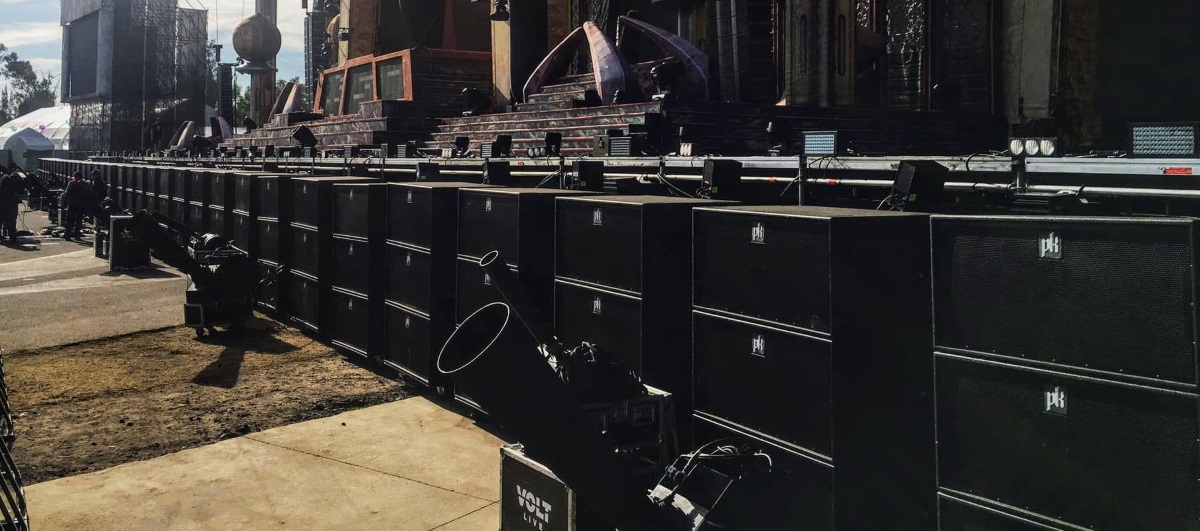O.K. It is very logocal. Thanks!At the frequencies of concern, you won’t be guiding the waves, they are simply too long for that to happen.
What should be the shortest lenght? 1/4 wavelenght?
Lower cutoff frequency of a waveguide is wavelength/2 eg. 1000Hz= 0.334m/2= 16,7cm (61/2") If you want boost low frequencies, just put the speaker in the corner!
Wikipedia
http://en.wikipedia.org/wiki/Waveguide_(acoustics)
Introduction to horns and waveguides by Björn Kolberek
https://www.grc.com/acoustics/an-introduction-to-horn-theory.pdf
Practical DIY waveguides
Practical DIY Waveguides - Part 3
About horn speakers, theory and examples
Single Driver Website
Horn resources and links
Single Driver Website
Wikipedia
http://en.wikipedia.org/wiki/Waveguide_(acoustics)
Introduction to horns and waveguides by Björn Kolberek
https://www.grc.com/acoustics/an-introduction-to-horn-theory.pdf
Practical DIY waveguides
Practical DIY Waveguides - Part 3
About horn speakers, theory and examples
Single Driver Website
Horn resources and links
Single Driver Website
Last edited:
wow, a very long time since I last visited Single Driver Website
but good to see it still exist 🙂
but good to see it still exist 🙂
Karlson and Dipole speakers reportedly have improved polar response
I never heard one, but I believe I read somewhere that Karlson speakers improve the directivity of bass. I would pursue this with FreddyI who has studied them extensively.
The other option is some sort of dipole, but I think the design parameters are important.
I never heard one, but I believe I read somewhere that Karlson speakers improve the directivity of bass. I would pursue this with FreddyI who has studied them extensively.
The other option is some sort of dipole, but I think the design parameters are important.
Acoustical Horn Length [AHL] > Physical Horn length [PHL]
typo
For a free-standing horn, Min[AHL] = 1/4 Wavelength of the Lowest Frequency to be Passed W[LFP].
For a K-Horn Min[PHL] = 1/8 W[LFP] due to horn continuation by adjoining room walls.
The differance in lengths, is attributable to the air mass loading that occurs immediately outside the horn mouth. This is the same process that requires length adjustment of the duct of a bass reflex enclosure.
Regards,
WHG
Regards,
WHG
typo
O.K. It is very logocal. Thanks!
What should be the shortest lenght? 1/4 wavelenght?
For a free-standing horn, Min[AHL] = 1/4 Wavelength of the Lowest Frequency to be Passed W[LFP].
For a K-Horn Min[PHL] = 1/8 W[LFP] due to horn continuation by adjoining room walls.
The differance in lengths, is attributable to the air mass loading that occurs immediately outside the horn mouth. This is the same process that requires length adjustment of the duct of a bass reflex enclosure.
Regards,
WHG
Regards,
WHG
Last edited:
PA speaker designs
Hi
A lot of speaker designs for PA use very short horn like solutions.
I guess the theory is not amplification but more in regards to wish for control of direction of sound.
BassBoss VS21 is using some "hybrid" horn. It cannot achieve 1/4 of wavelenght. So my thought would be that the desire is to direct sound instead.
The speaker above goes to 25hz (-3db) and quite loud as well.
Is it possible to direct sound with such a short horn?
Kind regards
Asger
Hi
A lot of speaker designs for PA use very short horn like solutions.
I guess the theory is not amplification but more in regards to wish for control of direction of sound.
BassBoss VS21 is using some "hybrid" horn. It cannot achieve 1/4 of wavelenght. So my thought would be that the desire is to direct sound instead.
The speaker above goes to 25hz (-3db) and quite loud as well.
Is it possible to direct sound with such a short horn?
Kind regards
Asger
You can get around physics. If you want to control the directivity of 40Hz, you're going to need something that's about as big as 40hz. That's 8.5 meters long.
At music festivals, this is why the subs are set up in a wall:

Also, BassBoss VS21 is a slot loaded ported subwoofer:

It's not a horn.
At music festivals, this is why the subs are set up in a wall:

Also, BassBoss VS21 is a slot loaded ported subwoofer:

It's not a horn.
Old thread revivals are a chance to visit with old friends we have lost.(hi, Tinnitus...hi, Sreten..)
With bass frequencies it is best to think of supporting a wave, rather than guiding it.
So we use a panel to connect the baffle to a boundary, and reduce the dissipation of the wave's energy.
Pretty much all we can do.
With bass frequencies it is best to think of supporting a wave, rather than guiding it.
So we use a panel to connect the baffle to a boundary, and reduce the dissipation of the wave's energy.
Pretty much all we can do.
For sure, we just lost Dr. Bruce Edgar a few weeks ago. I will always be grateful for his help and guidance. My speaker system would not exist, if not for Dr. Bruce !!!
Meet Joe, and his amazing DIY horn speakers - YouTube
Joe
Meet Joe, and his amazing DIY horn speakers - YouTube
Joe
Hi
A lot of speaker designs for PA use very short horn like solutions.
I guess the theory is not amplification but more in regards to wish for control of direction of sound.
Greets!
Right, just WG the woofer's BW above its upper mass corner [2*Fs/Qts'] to keep it relatively small, provide more focused, articulate mid bass/lower mids 'punch'/'fullness'.
Qts' = Qts + any added series resistance [Rs]: Calculate new Qts with Series Resistor
- Home
- Loudspeakers
- Multi-Way
- How to design a waveguide for bass speaker?